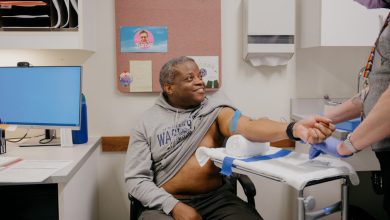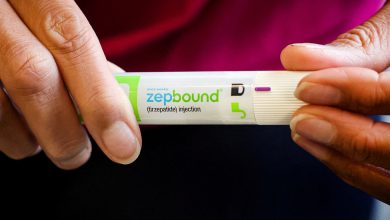The U.S. government doubles its order for Pfizer’s Covid pills.

The United States government doubled its order for Pfizer’s Covid pills on Tuesday, a move that will modestly increase the nation’s very limited supplies of the treatment in the short term, as the country deals with a record-setting surge in coronavirus cases.
The new order will eventually provide enough pills for 10 million Americans, bringing the government’s total order of the drug to 20 million treatment courses. But they will not all be available right away. Only 35,000 of the additional courses would be delivered this month, and 50,000 more in February, to add to the 350,000 treatment courses that were already expected in the next two months, according to a senior administration official.
“We may need even more,” President Biden said on Tuesday, announcing the move ahead of a briefing he was set to receive from health advisers. “That’s the estimate we need right now.”
The government has agreed to pay Pfizer $530 for each treatment course, the same amount it paid for its initial order late last year, the official said.
The increase in supplies is likely to come as welcome news at a time when Pfizer’s pills and other Covid treatments are hard to find and demand for them is high. But monthly deliveries of the Pfizer treatment, known as Paxlovid, are not expected to ramp up into the millions until April, much too late to help with the current surge. The combined order is not due to be completely filled until the end of September.
Still, Mr. Biden hailed the order as a key component of the federal government’s winter pandemic response. “They’re a game-changer,” he said, “and have the potential to dramatically alter” the course of the pandemic.
Paxlovid was authorized two weeks ago for use in high-risk Covid patients age 12 or older. The treatment, meant to be taken soon after the start of symptoms, has proved in clinical trials to be highly effective in staving off severe illness.
But public health experts have warned that without adequate testing supply — a problem in many parts of the country — it could be difficult to quickly get the pill to those most in need.
Mr. Biden on Tuesday said that the administration’s plan to have insurers reimburse people for at-home tests would go into effect soon, as would a website allowing Americans to order free tests delivered to their homes.
“I know this remains frustrating,” he said. “Believe me, it’s frustrating to me. But we’re making improvements.”
The first supplies of Paxlovid have already begun arriving in some parts of the country, but they are so limited in quantity that state health officials are recommending that they be used only for the highest-risk of high-risk patients.
Arizona, for instance, advised that Paxlovid be given only to people over 70 who also have severe health conditions like end-stage heart disease, or to younger patients with weakened immune systems.
State officials say they are carefully distributing the pills they have received to people most in need.
In West Virginia, health officials have shipped around 20 treatment courses to each of 14 locations and reserved about 20 more in a central state repository for use in case of an outbreak, said Dr. Clay Marsh, the state’s Covid-19 czar.
For the first few weeks of the rollout, he said, Paxlovid was sent to sites where people can also get tested for the virus, like primary-care doctors’ offices and drugstores, in an effort to “reduce the complexity and number of different touch points that people will have to make.”
In Louisiana, health officials met last week with hospital executives from across the state, who pitched a plan the state adopted this week in its most recent allocation of 342 Paxlovid courses: sending the pill to hospital outpatient pharmacies.
Dr. Joseph Kanter, Louisiana’s top health official, said the idea was to ease the strain on overflowing emergency departments and intensive care units, where physicians can prescribe the pill to patients at risk and discharge them before an infection spirals.
That will shorten the time between when a patient is identified as a candidate for Paxlovid and when it is prescribed and taken, Dr. Kanter said.
“There’s a limit to how much you can triage this from a top-down level,” he said. “You have to put it in the hands of providers and pharmacists and provide the best guidance you can, then step back and hope it gets to people who most need it.”



